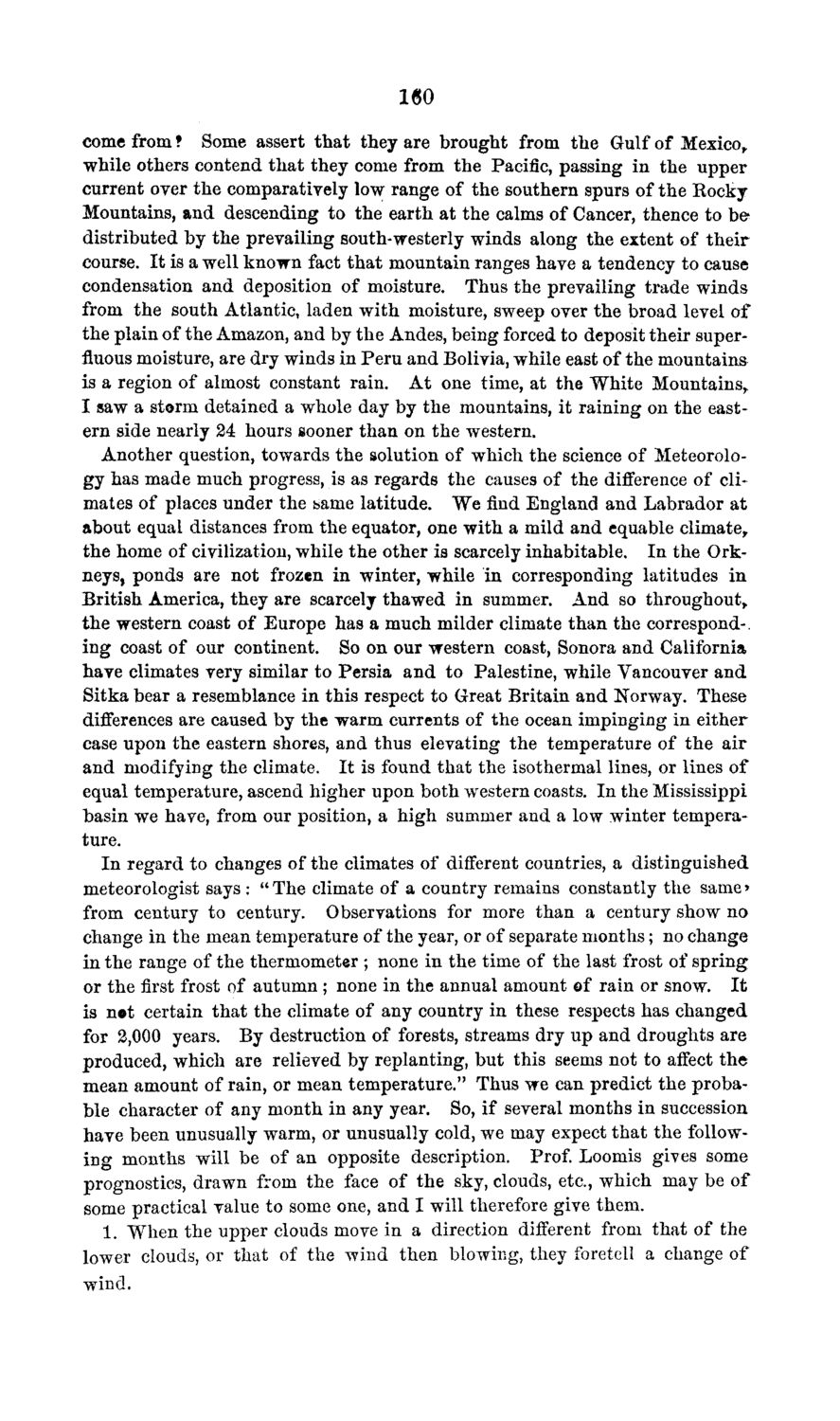| |
| |
Caption: Board of Trustees Minutes - 1869
This is a reduced-resolution page image for fast online browsing.

EXTRACTED TEXT FROM PAGE:
160 come from ? Some assert that they are brought from the Gulf of Mexico, while others contend that they come from the Pacific, passing in the upper current over the comparatively low range of the southern spurs of the Rocky Mountains, and descending to the earth at the calms of Cancer, thence to be distributed by the prevailing south-westerly winds along the extent of their course. It is a well known fact that mountain ranges have a tendency to cause condensation and deposition of moisture. Thus the prevailing trade winds from the south Atlantic, laden with moisture, sweep over the broad level of the plain of the Amazon, and by the Andes, being forced to deposit their superfluous moisture, are dry winds in Peru and Bolivia, while east of the mountains is a region of almost constant rain. At one time, at the White Mountains, I saw a storm detained a whole day by the mountains, it raining on the eastern side nearly 24 hours sooner than on the western. Another question, towards the solution of which the science of Meteorology has made much progress, is as regards the causes of the difference of climates of places under the same latitude. We find England and Labrador at about equal distances from the equator, one with a mild and equable climate, the home of civilization, while the other is scarcely inhabitable. In the Orkneys, ponds are not frozen in winter, while in corresponding latitudes in British America, they are scarcely thawed in summer. And so throughout, the western coast of Europe has a much milder climate than the correspond-, ing coast of our continent. So on our western coast, Sonora and California have climates very similar to Persia and to Palestine, while Vancouver and Sitka bear a resemblance in this respect to Great Britain and Norway. These differences are caused by the warm currents of the ocean impinging in either case upon the eastern shores, and thus elevating the temperature of the air and modifying the climate. It is found that the isothermal lines, or lines of equal temperature, ascend higher upon both western coasts. In the Mississippi basin we have, from our position, a high summer and a low winter temperature. In regard to changes of the climates of different countries, a distinguished meteorologist says : " The climate of a country remains constantly the same > from century to century. Observations for more than a century show no change in the mean temperature of the year, or of separate months; no change in the range of the thermometer ; none in the time of the last frost of spring or the first frost of autumn ; none in the annual amount of rain or snow. It is not certain that the climate of any country in these respects has changed for 2,000 years. By destruction of forests, streams dry up and droughts are produced, which are relieved by replanting, but this seems not to affect the mean amount of rain, or mean temperature." Thus we can predict the probable character of any month in any year. So, if several months in succession have been unusually warm, or unusually cold, we may expect that the following months will be of an opposite description. Prof. Loomis gives some prognostics, drawn from the face of the sky, clouds, etc., which may be of some practical value to some one, and I will therefore give them. 1. When the upper clouds move in a direction different from that of the lower clouds, or that of the wind then blowing, they foretell a change of wind.
| |